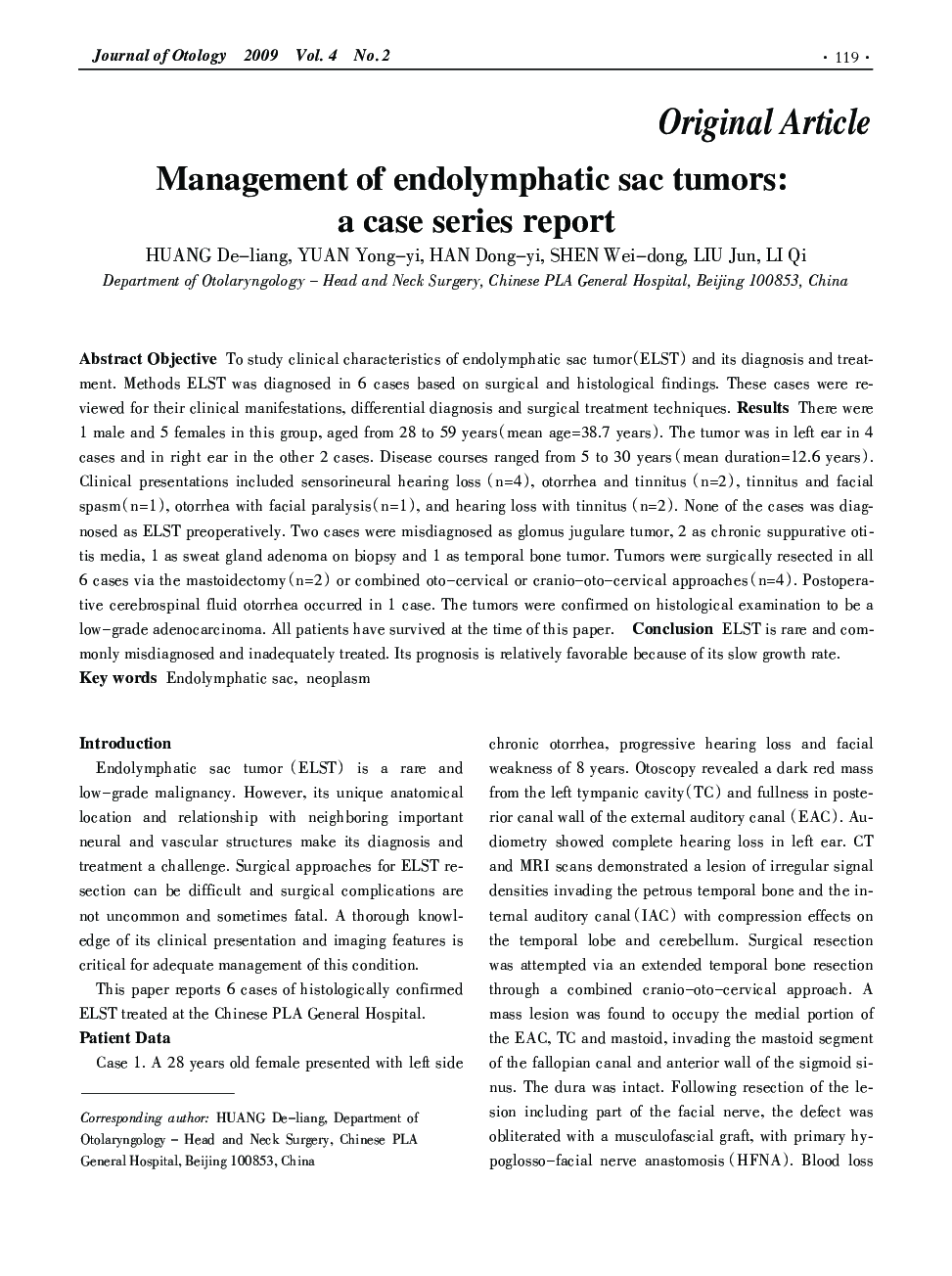| Article ID | Journal | Published Year | Pages | File Type |
|---|---|---|---|---|
| 4116776 | Journal of Otology | 2009 | 5 Pages |
ObjectiveTo study clinical characteristics of endolymphatic sac tumor(ELST) and its diagnosis and treatment. Methods ELST was diagnosed in 6 cases based on surgical and histological findings. These cases were reviewed for their clinical manifestations, differential diagnosis and surgical treatment techniques.ResultsThere were1 male and 5 females in this group, aged from 28 to 59 years (mean age=38.7 years). The tumor was in left ear in 4 cases and in right ear in the other 2 cases. Disease courses ranged from 5 to 30 years (mean duration=12.6 years). Clinical presentations included sensorineural hearing loss (n=4), otorrhea and tinnitus (n=2), tinnitus and facial spasm(n=l), otorrhea with facial paralysis(n=1), and hearing loss with tinnitus (n=2). None of the cases was diagnosed as ELST preoperatively. Two cases were misdiagnosed as glomus jugulare tumor, 2 as chronic suppurative otitis media, 1 as sweat gland adenoma on biopsy and 1 as temporal bone tumor. Tumors were surgically resected in all 6 cases via the mastoidectomy (n=2) or combined oto–cervical or cranio–oto–cervical approaches (n=4). Postoperative cerebrospinal fluid otorrhea occurred in 1 case. The tumors were confirmed on histological examination to be a low–grade adenocarcinoma. All patients have survived at the time of this paper.ConclusionELST is rare and commonly misdiagnosed and inadequately treated. Its prognosis is relatively favorable because of its slow growth rate.
